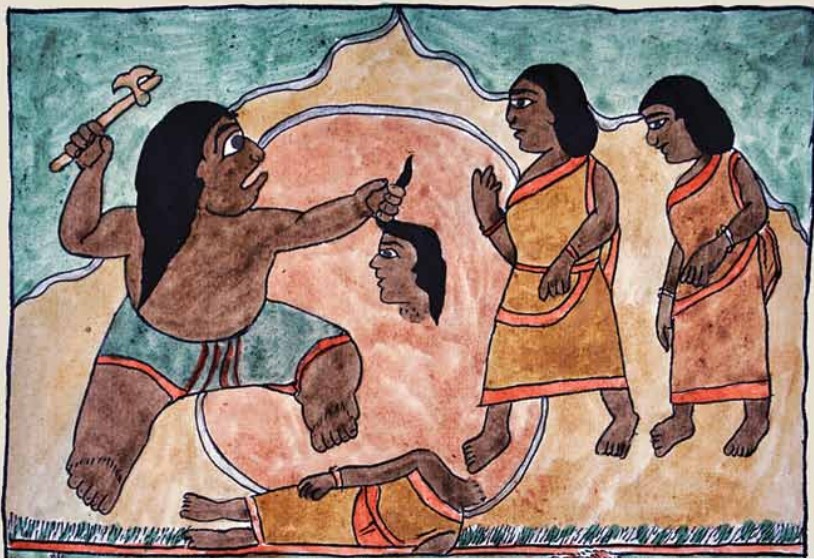Soft Diseases
Matthew Ronay interview
Rajesh Punj
For years I use to talk a lot about ‘muscle memory’. There is a thing inside my body that makes me do certain kinds of lines, that leads to a certain kind of vocabulary. Which I still think is true, but the goal, the journey of drawing for me, is to be in a place where I am not really thinking about any (goals). That I almost become a vehicle for what happens.
Entering into an exhibition of works by American artist Matthew Ronay can be likened to walking through a deserted kindergarten, as his ice-cream coloured sculptures resemble the assemblages of a children’s activity area. Pieced together play things that could equally pass as cultured cuisine on plinth like plates. And as an artist unsure of how to go about discussing his work, Ronay sees his creative configurations in much the same way as an audience new to his work might; with a genuine curiosity. As Ronay concurs, there is certainly a childlike approach to how he sees everything, in light of his acute colour-blindness. Whereby his limited cognition of colouration has led to his conceiving of a unique way of working, involving the practical influence and attention of his wife. Initially hesitant becoming more selfassured, Ronay explains the origins of his art as involving an insistence on scribbling things down. Less words and more organic outlines, these pencilled patterns become the intuitive templates for his heavier charcoal drawings, and further the blueprint for his sculpted forms. Citing how “It is important to understand that the sculptures almost always start as drawings, which are done automatically. So I draw all the time, never on assignment.” Insisting there is no clear intention to his drawings, Ronay sees them more as explorations of his mind, as by the process of applying himself to the action it becomes entirely involuntary. Likening his approach to drawing, to that of eating or having sex, as an exercise that has become entirely habitual. Intended, by the artist’s hand, to trigger a series of automatic inventions that once fleshed out in wood and plastic, coloured, and pieced together as complete sculptures, become the basis for an unconscious cannon of objects as art.
For me the object is to continually draw so that I am not waiting for inspiration. It is almost like a river, I get into the river and it goes where it goes, and I get out of the river, to do things like produce or do whatever. But in the end circuitously, we were talking initially about the installation (of the works), for me in my studio I have this kind of set-up of a big platform, where I place works on to look at and to photograph.
Physical forms that for the audience, as Ronay understands it, play with notions of attraction and repulsion, of figuration and abstraction, as they begin in the mind’s eye as recognizable forms, ‘stylish gastronomy’ ‘sterilised body parts’, or ‘soft diseases’; before losing themselves to their otherworldly quality. Suggesting, “It is often the area that I like the most, the area right between things.” A critical juncture that for Ronay becomes a breeding ground for all of his doubts and desires,to create works that are based on reality, but born of deeper ruminants. Explaining his motives as meditative, “I am also a meditation practitioner so for me the goal, if there is a goal, is to get to a place where I am not really attached to any sort of will” His creativity is just as candid, “When I think of my work, for me it has a non-duality, in the sense that it is part celebration, and part dealing with darkness, sadness even, because there is evidence of growth and decomposition – of a balance and imbalance.”
Interview
Rajesh Punj: This exhibition appears to be a real departure for you. Can we begin by exploring that?
Matthew Ronay: When I first visited the spaces, when I arrived, I understood immediately what I wanted to do.
RP: Did you work with a maquette of the gallery initially to decide everything?
MR: We had a sketch-up, yeah, but in Queens (New York) where I work, I have one room that is like a ‘clean-room’ that acts as a viewing room. I don’t do installation photography, but I do do all of my own photography. It is important to understand that the sculptures almost always start as drawings that are done automatically. So I draw all the time, never on assignment.There is an essay about this that a sculpture almost always starts as a two dimensional image, and then it gets passed on to another person of me. I do everything myself; but the two people are different – one is drawing, the other making. 
RP: So you are effectively in dialogue with yourself. One that draws with the other that designs.
MR: Yes.
RP: Is it that there are moments that you concentrate on drawings exclusively?
MR: No I draw all the time. I think of it like, you know there are particular sea creatures like sponges or bottom-feeders that feed on the waste. So for me I realise my strength comes from my ability to relax and filter my unconscious, which includes my own personal psychology, universal psychology, or science, or any of these things.

